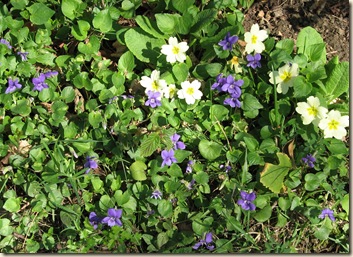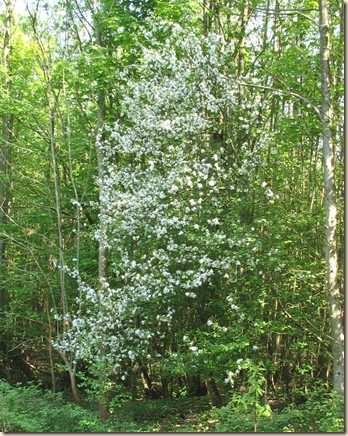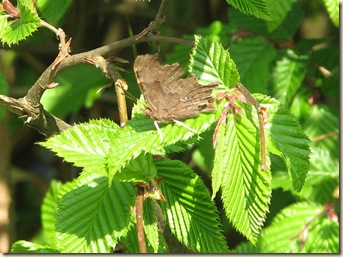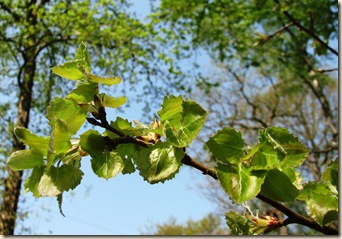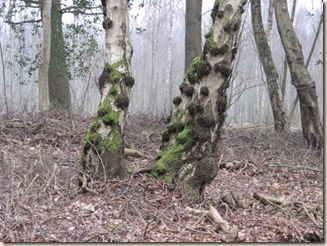Today I led a guided walk on a 3 mile route through Brede High Woods, which are just coming up to their best. The bluebells are starting now and this male brimstone butterfly was enjoying their nectar on the bank below the main car park.
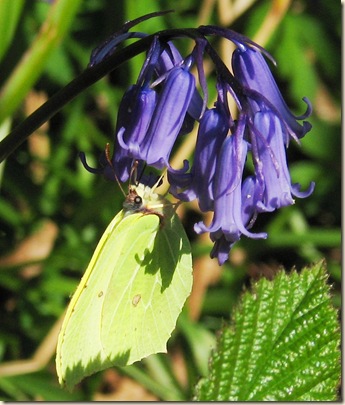
We first walked east on the long ride through broad leaved plantations on the old fields once called Sheeplands, Sheep Pound Field and Pear Tree Field. I had hoped there might be a pear tree in the latter, but we did not see one, though we did see a crab apple about to come into flower.
At the end of the ride we turned south towards Twist Wood where the orpine (Sedum telephium) (see picture below), moschatel (Adoxa moschatellina) and pignut (Conopodium majus) grow among the many other plants that are ancient woodland indicator species.
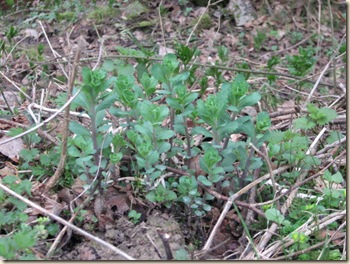
We continued south to the transmission lines and on to Pond Wood where there were several large patches of soil rooted by wild boar.
There were plenty of butterflies about and in some of the newly cleared areas around the transmission lines we saw many orange-tips, brimstones and peacocks. We even managed to find an orange-tip egg on a plant of lady's smock.
After this we kept quite close to the northern edge of the reservoir before heading up towards Bonsall's Bridge (TQ799201). In the scrub in this area we heard several nightingales in full voice and it is good to know they are back in the woods for the summer nesting season.
Walking through Brede High Wood itself we saw one or two common lizards, then we had a quick look at Holman Wood Field where one of the children found a toad crossing the path.
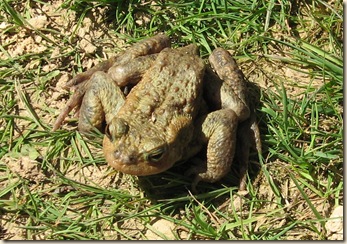
From here we returned via Brede High Heath to the car park.
The woods were inspirational and will improve as the month goes on and the bluebells reach their full glory while more wildflowers join those already giving a good show. The songs of the wild birds will also rise to a crescendo.
What better time to visit these wonderful woods? Look at the Woodland Trust events list for guided walks:
http://www.woodlandtrust.org.uk/en/our-woods/brede-high-woods/pages/events.aspx?wood=5605
